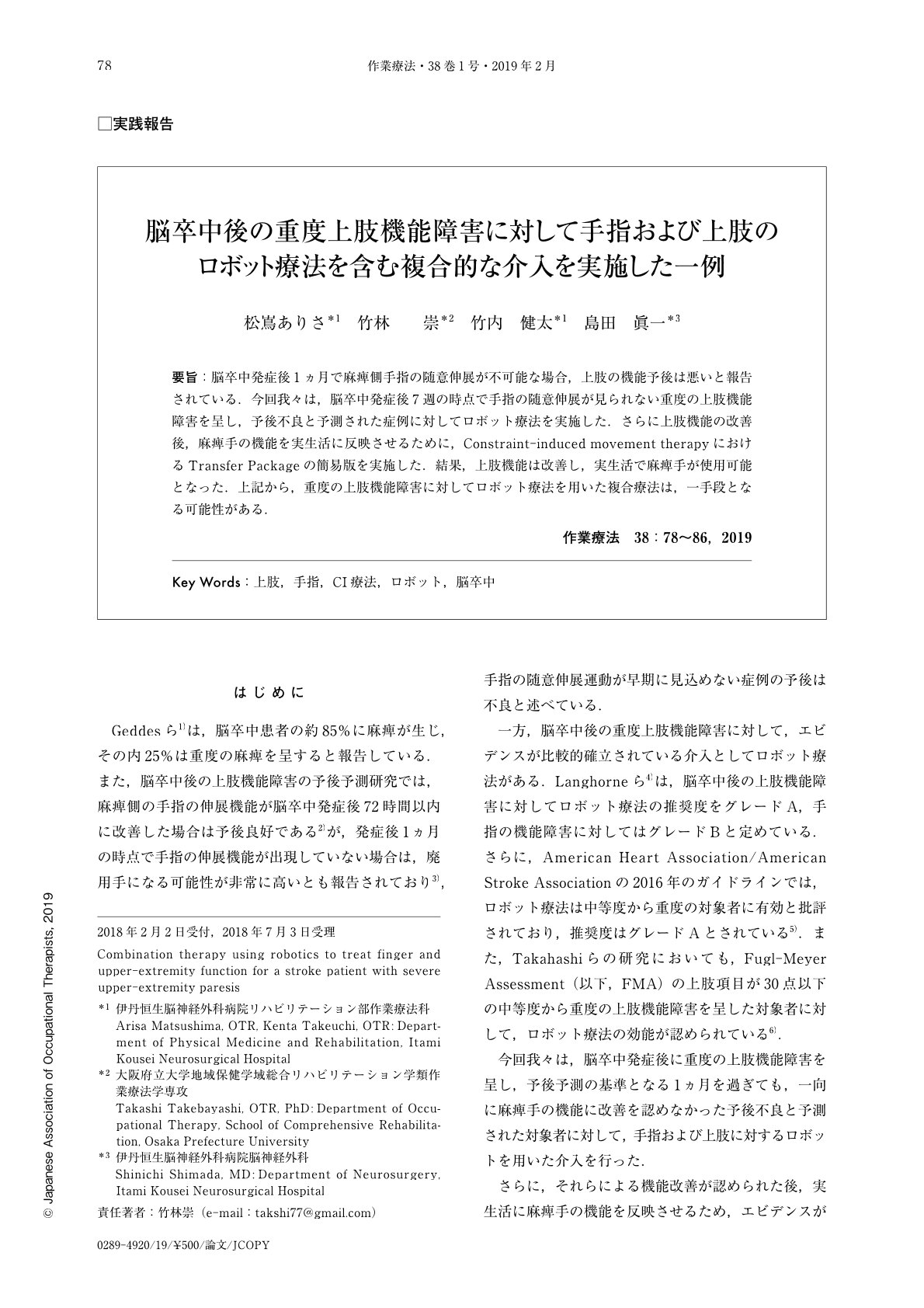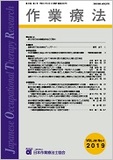Japanese
English
- 販売していません
- Abstract 文献概要
- 1ページ目 Look Inside
- 参考文献 Reference
- サイト内被引用 Cited by
要旨:脳卒中発症後1ヵ月で麻痺側手指の随意伸展が不可能な場合,上肢の機能予後は悪いと報告されている.今回我々は,脳卒中発症後7週の時点で手指の随意伸展が見られない重度の上肢機能障害を呈し,予後不良と予測された症例に対してロボット療法を実施した.さらに上肢機能の改善後,麻痺手の機能を実生活に反映させるために,Constraint-induced movement therapyにおけるTransfer Packageの簡易版を実施した.結果,上肢機能は改善し,実生活で麻痺手が使用可能となった.上記から,重度の上肢機能障害に対してロボット療法を用いた複合療法は,一手段となる可能性がある.
Previous research indicates that poor finger mobility one month after stroke onset may indicate poor upper-extremity function. Current treatment consisted of robotic therapy for severe upper-extremity paresis related to inactive finger extension one month after stroke onset. After improving upper extremity function, we used the brief version of transfer package of the constraint-induced movement therapy to transfer functional gain in training into real-world use. Consequently, upper-extremity and real-world functions improved. Thus, combination therapy incorporating robotic therapy might be an effective treatment for stroke patients with severe upper-extremity paresis.

Copyright © 2019, Japanese Association of Occupational Therapists. All rights reserved.


